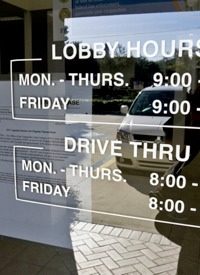
Keeping in mind that the “beige book” report from the Federal Reserve yesterday is only a compilation of anecdotal reports from businesses across the country, any conclusions in that report that the economy “continued to expand moderately,” and that it “continued to improve, on balance,” should be viewed with extreme caution. For buried in the report were the comments that “the housing sector remains a significant drag on the economy” and that “activity in residential real estate and new home construction remained slow across all Districts.”
Real estate continues to be battered by the aftereffects of the implosion of the housing bubble, as noted by CNNMoney, which reported that nearly three million foreclosure notices were filed during 2010, and that number most certainly would have been higher except for the robo-signing scandal which resulted in the delay of another 250,000 notices being filed. RealtyTrac’s CEO, James Saccacio, pointed out that “many of the foreclosure proceedings that were stopped in late 2010 … will likely be re-started and add to [the foreclosure] numbers in early 2011.”
The Obama administration’s attempt to fend off reality through its HAMP (Home Affordable Modification Program) proved to be an utter failure and another waste of time and money. The concept was that government intervention in the operation of the marketplace would allow homeowners nearing default on their mortgages to renegotiate terms to a more favorable level, thus allowing them to stay in their homes despite the pending default. Initially the program was estimated by the government to be able to help as many as four million homeowners to keep their homes. As time wore on and reality continued to take its inevitable toll, the failure of HAMP was nearly complete. About 435,000 loans were modified, and Fitch Ratings now says that three-quarters of those HAMP mods would ultimately fail after all.
Laurie Goodman, head of Amherst Securities, estimates that potentially more than 10 million mortgage holders are in danger of defaulting over the next year or so, which explains why mortgage loan applications continue to fall. In a recent report, the Mortgage Bankers Association noted that an astonishing 72 percent of all mortgage activity was related to refinancing existing mortgages, leaving less than 30 percent related to new home financing. This rush of refinancings bodes ill for new home buyers, because much of the refinancing is motivated by mortgage holders wanting to take advantage of low interest rates before they move higher. But as those rates inevitably move higher, potential new home purchasers will find it increasingly difficult to quality for new loans at the higher rates.
The report by the Labor Department that initial jobless claims rose by 35,000 last week caught observers by surprise, most of whom were expecting a decline of 40,000. And many of those claims don’t count those who are claiming benefits under the Congress’ recently extended jobless claims program. And this is reflected by the latest monthly Job Openings and Labor Turnover Survey, which showed the number of job openings declining by 80,000 in the month of November. John Canally, an economist at LPL Financial, noted that job creation is tied to the ability of small business to grow, and “small businesses need financing to hire. A bigger pickup in bank lending is needed to lead to a pickup in hiring.”
But that isn’t happening, nor is it likely to happen any time soon. As Bud Conrad noted, writing for Casey’s Daily Dispatch, “We don’t have evidence of recovery in loans but rather [they are] continuing their decline since the beginning of this recession in 2008…. [The numbers] are still showing we are in the worst decline on record.”
Confirming that borrowers aren’t borrowing because banks aren’t lending is the recent report by Institutional Risk Analytics (IRA) showing the continuing deterioration of banks’ balance sheets since the end of 2007. For example, the number of banks rated A+ has fallen from 5,556 to just under 3,500 as of last September, a decline of almost 40 percent. And those banks rated F has jumped nearly 60 percent, from 1,029 in 2007 to 1,638 at the end of September.
Total bank lending has declined substantially in the same period, while defaults have increased by more than 400 percent. All across the study, banks have been holding their reserves in government securities rather than in new loans, and continue to hunker down as credit card and commercial and industry lending losses continue to mount. Loan losses in residential real estate have increased by almost 10 times along with home equity loan losses. Commercial real estate lending has declined by 25 percent while “distressed loans/defaults” have increased from $600 million in 2007 to nearly $2.5 billion. IRA’s listing of “Degraded Real Estate” shows mortgages with payments over 90 days late have also increased by almost 10 times while real estate now owned by the banks through defaults (Real Estate Owned, or REO) has nearly quintupled.
After perusing those numbers, economist Gary North asked:
Will [banks] be lending in 2011? Will they [be able to] roll over their loans? If they do, they are betting their survival on businesses [which are already] in deep trouble. If they don’t, they’ll have to foreclose. That will put them in a lower rating for stress testing…. And just wait until the commercial real estate foreclosures begin.
In looking at the continuing avalanche of reports, studies, analyses, and predictions about the state of the economy, it would be well to consider the health of the banking industry first and foremost. Until it starts to heal, little can be expected in the way of a robust resurgence of the economy.
Photo: AP Images



